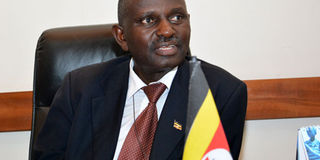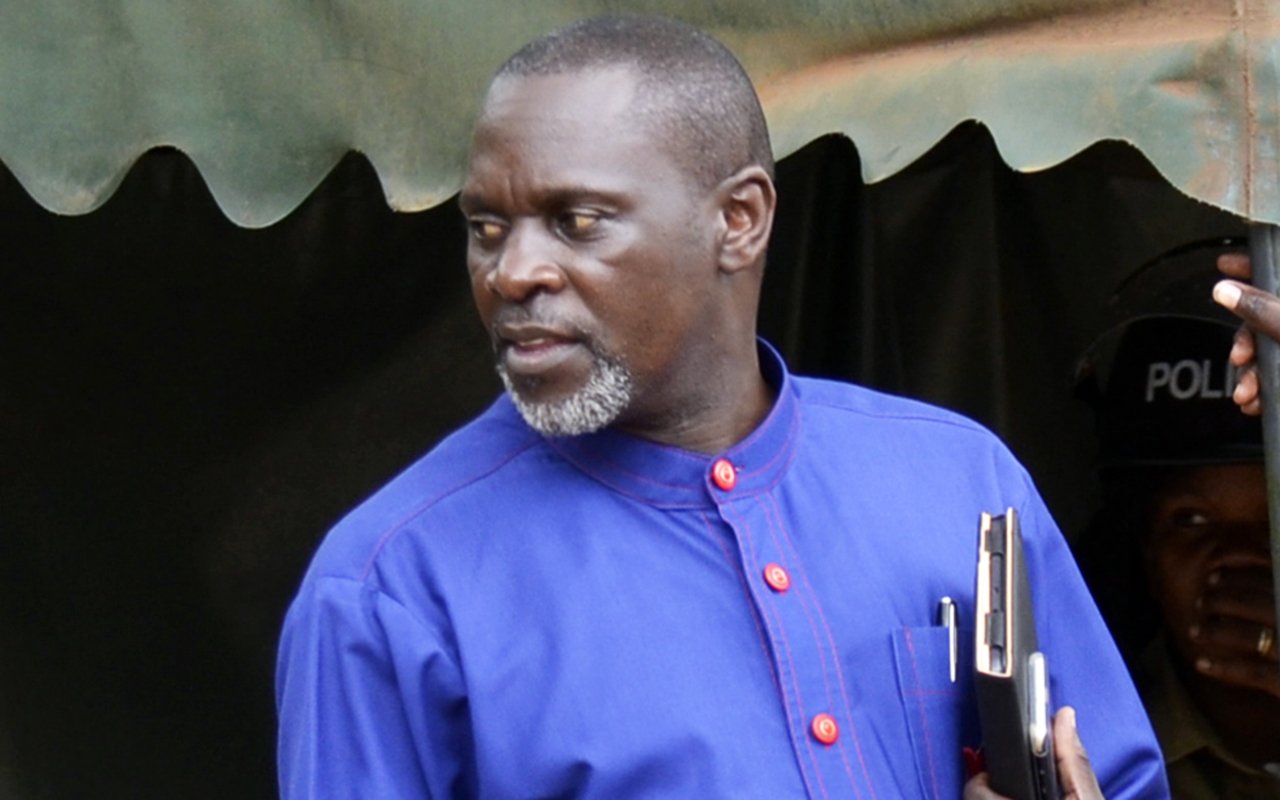A peek into pension scheme for the elderly

Protecting senior citizens. Mr Stephen Kasaija, the head of the Expanding Social Protection Programme Management Unit under the ministry of Gender.
PHOTO BY GODFREY LUGAAJU
What you need to know:
Interview. In the last eight years, government piloted and later started a phased implementation of social protection for the elderly. Henry Lubega caught up with Stephen Kasaija, head of the Expanding Social Protection Programme Management Unit under the ministry of Gender.
What is social protection and more so to do with senior citizens in the case of Uganda?
Social protection is a public and private intervention which is geared towards addressing the risk and vulnerability which different individuals face in the course of their lives. In terms of older persons it’s the kind of risks and shocks they could face. As one grows old you become less active and less energetic. Hence your earning is affected.
From the perspective of social protection it means you need to prepare so that when that shock comes you can mitigate the effects. Social protection here means putting in place mechanism so that you can mitigate that risk when it comes.
From the senior citizens perspective it would mean the interventions we have put in place to cope with that old age challenges in terms of income, their health and other interventions so that these people don’t get dehumanised as they grow old.
How do you define an old person under this programme?
An old person is determined by age. In Uganda any person 60 years and above is old. In terms of providing the senior citizens grant we look at anybody above 60 years. But for most of the districts, save for Karamoja sub-region, we go for people who are 65 years and above. Reason being that up to 65 someone can be still active and also our labour laws stop the person at 64 years.
There are people who believe this programme is promoting laziness among the old people. Don’t you think they have a point?
I wouldn’t think that is the approach. This programme instead promotes hard work because this it’s taking the old people back to work. When they get the money they invest it. We have seen old people upon getting this money they open gardens, some are buying animals. They may not be the ones going to work themselves but they are involved in the supervision of this work.
Also through this programme, the lazy jobless youth when they see these old people with work they run to them to get jobs. When an old person wants to improve their shelter they are turning to the young people. So ideally in the local areas this programme is creating employment not promoting laziness.
For how long has this been in place and how wide is it spread in the country?
It’s about eight years of existence, but the whole idea is to try and establish a social protection programme for Uganda, that’s why we are calling it Expanding Social Protection Programme. The senior citizen grant is one of the components we are trying to test. Good enough it has passed the test and it can improve the lives of the older people.
At the moment we are reaching 157,000 people in 47 districts. That is above 10 per cent of older persons in the country. There are 1.5 million old people in Uganda above the age of 65 years. This is the beginning of us building a system, on which the government of Uganda has committed to provide Shs149b for the next of five years.
With the proposed expansion to cover the whole country how much is this going to cost the Ugandan taxpayer?
For us to cover old people who are 65 and above we will need not less than Shs373b per year. But that’s not cast in stone if we can’t afford it now we can take in something we can afford. If we are to cover people who are 80 years and above we need Shs142b per year, 75 years and above we need Shs183b. We shall be giving government these options for it to make a choice. My advice to government is to start with what it can afford. But to me I would say give me all the money I need because I know the demand and I have seen the impact.
What’s the genesis of the Senior Citizen’s Grant (SCG)?
SCG came about when the Ministry of Gender, Labour and Social Development was developing a social sector development plan. When the process was on going the World Bank was organising a conference on social protection in Paris, France, and they invited us.
The risks they were talking about where applicable to Uganda so when we were developing our sector development plan we thought we need to have social protection. That’s how we started putting social protection in our plan and later on it was integrated in the national development plan, starting with the senior citizen grant as a pilot.
In that effort we had to develop a policy to guide the social protection. The policy talks of social insurance to cover all those in the informal sector which is employing majority of the Ugandans.
How are you protecting this programme from corruption and fraud that are in most government programmes?
We have developed programmes aimed at minimising corruption and fraud. In social protection we know the risky areas, one is the targeting of how we identify the beneficiaries, and we have made sure we put in place systems that send the money direct to the beneficiaries.
We have worked with National Identification and Registration Authority (NIRA) to make sure each beneficiary has a national ID. NIRA provides us with data of registered names in the district and it’s from this that we select the number of people who qualify, then we use the district and our people in the district and the region to go down and confirm that these people exist.
For payments we have contracted Post Bank. Money is transferred to Post Bank who set payment dates and go down to the paying points and pay out. But before they do that once we have identified the beneficiaries Post Bank goes to the areas and enrol them by opening an account for each and captures their photos, thumb and finger prints. There is no way money can be moved from that account without the biometric of the account holder.
Kasaija’s take on Key issues
What have been the success of the programme for the time it has been in place?
When giving out this money we look at it as consumption money. But majority of the recipients look at it as for investment capital. We have noticed that these for every one shilling the older person gets some of them invest it and they get two shilling for each.
This money also has been key in fighting poverty. The current household survey from Ubos has shown that districts where this programme is being implemented have registered a decline in poverty levels compared to those that we haven’t reached. There has been a decline in unemployment levels in the districts where the programme is implemented compared to these we have not reached. Those and many other pointers show that this programme is having a positive impact on the people and the economy as a whole.
Is this entirely government money or there are other donors supporting the programme, and if so is there a time frame for their exit?
We have been with two development partners for DFID from UK and Irish Aid the past eight years. These according to the current memorandum of understanding we have with them they have another two years before they pull out.
Based on that whatever we are doing we are ensuring that we can sustain the programme even after. Even when they exit am sure government will be able to find the money because its needs only 0.4 per cent of the national Budget to keep the programme running.




